Share
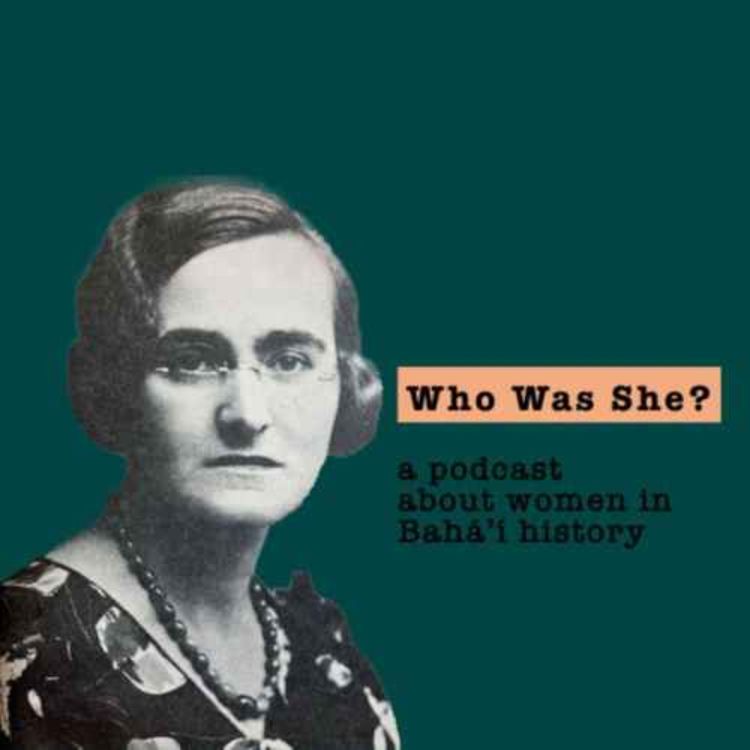
Who Was She?
Meeting Martha Root
Martha Root taught Lidia the Baha’i Faith and became a big influence in her life. This episode shares a bit of her history and the beginning of her relationship with Lidia.
TRANSCRIPT:
Welcome to Who was she? Podcast where I, Tara Jabbari share the stories of women throughout Baha’i history. This season, we are exploring the life of Lidia Zamenhof, an Esperantist and Baha’i who traveled through three continents to teach languages in efforts to bring unity to humankind. In the previous episodes, we learned about Lidia’s parents and family, their struggles and passion to unite people through the use of language. In 1925, Lidia met Martha Root who she would consider affectionately as her spiritual mother.
Martha Root was born into a baptist family in 1872. Raised in Pennsylvania, she showed an early interest in reading books rather than learning how to sew or cook. By age 16, she had graduated high school with honors and then went to Oberlin College where she designed her own program to study languages: specifically Latin, Greek, French, German, and English. She eventually transferred to the University of Chicago and earned her Bachelors in Literature in 1895., Upon graduating, Martha became a school teacher and journalist. In 1908, she met Roy C. Wilhelm who was speaking about his recent travels to Akka. There he met, ‘Abdu’l-Baha, the Son of the Founder of the Baha’i Faith, a new world religion. Intrigued by this she began reading the Writings of the Baha’i Faith and meeting other Baha’is including Thornton Chase, the first American Baha’i. In 1909 Martha converted to the Baha’i Faith. Over the years, she wrote about the Faith for newspapers and attended the first annual Baha’i convention held in Chicago in 1911.
By 1912, Abdu’l-Baha was traveling to North America after years of imprisonment. Martha attended as many of His talks as she could, and even began arranging some of His talks in Pittsburgh. It was also During this time Martha Was diagnosed with breast cancer. They instantly bonded and with Abdu’l-Baha’s guidance, Martha went into remission for many years. She expressed interest in traveling to teach the Faith to different parts of the world which delighted Abdu’l-Baha. In January 1915, she traveled to Egypt, living there for 6 months as a journalist, and later in the year, she traveled to Bombay, Japan, and Hawaii. She was studying Esperanto as she believed it would help her along her travels which proved to be right. For the next five years, Martha stayed primarily in North/Central America to meet with officials including the President of Mexico to teach them about the Baha’i Faith.
She also strengthened her Esperanto and wholeheartedly believed that the international auxiliary language should be a neutral one and sympathized with the principles of Esperantism. She wrote to the Eserpantists the she would like to arrange a Baha’i meeting during their Geneva congress. She wrote to them, “Our aim is the same as yours, the Baha’is Movement is the Esperanto of religions.” On August 6th, 1925 in Geneva, Switzerland, Martha spoke during the annual Universal Congress of Esperanto. Simply called, “The Baha’i Meeting,” the room held 100 guests and had portraits of ‘Abdu’l-Baha and Dr. Ludwik Zamenhof.
Lidia also attended this meeting. At first glance, it did not make much of an impression on Lidia, “I came only out of politeness, I did not pay any special attention to what was going on. The words were going into one ear and out the other.”
However, Martha Root remembered seeing Lidia and her sister, Zofia from that meeting and she was determined to meet with them again. She planned to visit Warsaw as she was drawn to Lidia who, she wrote to a friend, “Seemed so sad.” Martha believed that the words of Abdu’l-Baha and the Baha’i Faith would bring a light in Lidia’s life.
A few months later, there were plans to unveil a monument dedicated to Dr. Zamenhoff. Lidia received a telegram from Martha Root asking if she could speak at the unveiling ceremony on the relation of Zamenhof’s life work to the principles of the Baha’i Faith. Lidia was amused and granted Martha’s request.
In April, 1926, Esperantists from around Europe attended the ceremony of the monument of Dr. Zamenhof in Warsaw. Martha spoke during the ceremony, quoting Abdu’l-Baha’s words praising Esperanto and Dr. Zamenhof’s statements about the Baha’i Faith and his interest in the Baha’i movement. Dr. Zamenhof had believed that the idea of a neutral language could never succeed without a world religion.
Lidia admired Martha’s speech, where she spoke so fervently about her faith in near-perfect Esperanto tinged with an American accent. As Martha had hoped, The Zamenhof’s hosted her for two weeks where Lidia helped Martha with her Esperanto and Martha helped Lidia with her English. Martha felt guided to Lidia, she wrote to a friend, “For months I have been praying for this, I feel that Abdu’l-Baha and Dr. Zamenhof are wishing this closer coming together of the two movements.”
The two bonded, with Martha as her teacher, Lidia declared herself a Baha’i and they referred to each other as spiritual mother and child in letters.
Lidia explained later why she became a Baha’i. “In the Teaching of Baha’u’llah, I found the universality which only the truly God-given teaching can give to searching mankind. That is why it attracted me at the beginning.” She even said in her own words, she became “profoundly convinced that Esperanto was created directly under the influence of Baha'u'llah although the author of the language did not know it.”
Lidia had another passion and purpose in her life. In 1928, two years after she met Martha Root, Lidia served as the honorary president at the Baha’i sessions during the annual Universal congresses of Esperanto. But her newfound faith was not welcomed by all, and many Esperantists believed Lidia was abandoning her background. Despite her lifelong wish for everyone to be accepted, she was again disappointed with how people responded to her becoming a Baha’i.
Next episode, we will learn more of how Lidia felt about her faith, her Jewish background, how she juggled her duties to the Baha’i Faith and Esperanto, as well as the beginning of her travels outside of Europe.
This has been Who was she? Podcast, follow us on our Instagram, Facebook and Pinterest @whowasshe podcast. And please, rate and subscribe wherever you listen to this podcast. Logo designed by Angela Musaccio. Music was composed and performed by Sam Redd. I am your host, Tara Jabbari.
More episodes
View all episodes
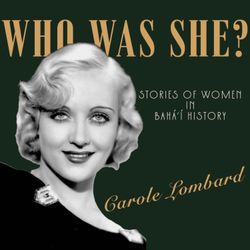
9. Bonus episode! BTS on Carole Lombard!
44:06||Season 4, Ep. 9A conversation with host Tara and her friend, Angie. Learn how this podcast season came about, the challenges, the creative process, and the people who helped make this season! We have a website! https://www.podpage.com/whowasshepodcast/You can also find more information on our social media:http://instagram.com/whowasshepodcasthttps://www.facebook.com/whowasshepodcasthttps://www.pinterest.com/whowasshepodcastOur music composer, Sam Redd is on SoundCloud as "Sam Redd": https://soundcloud.com/samreddand YouTube as @SammyManhattan: https://www.youtube.com/@sammymanhattanSubscribe on your favorite podcast platform: https://pod.link/1548368026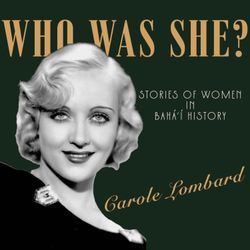
8. It's Been An Honor
18:49||Season 8, Ep. 8In our last episode of the season, we find out the challenges of Carole's love story with Clark Gable, her connections to some familiar names, her efforts to help during World War II, and her untimely death.We have a website! https://www.podpage.com/whowasshepodcast/You can also find more information on our social media:http://instagram.com/whowasshepodcasthttps://www.facebook.com/whowasshepodcasthttps://www.pinterest.com/whowasshepodcastOur music composer, Sam Redd is on SoundCloud as "Sam Redd": https://soundcloud.com/samreddand YouTube as @SammyManhattan: https://www.youtube.com/@sammymanhattanSubscribe on your favorite podcast platform: https://pod.link/1548368026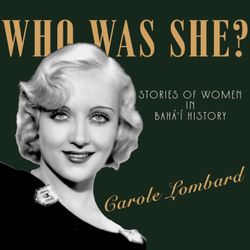
7. The Greatest Love Story
13:46||Season 4, Ep. 7How did Carole and Clark Gable finally become a couple? Why does "Gone with the Wind" have anything to do with it? Find out in the latest episode! We have a website! https://www.podpage.com/whowasshepodcast/You can also find more information on our social media:http://instagram.com/whowasshepodcasthttps://www.facebook.com/whowasshepodcasthttps://www.pinterest.com/whowasshepodcastOur music composer, Sam Redd is on SoundCloud as "Sam Redd": https://soundcloud.com/samreddand YouTube as @SammyManhattan: https://www.youtube.com/@sammymanhattanSubscribe on your favorite podcast platform: https://pod.link/1548368026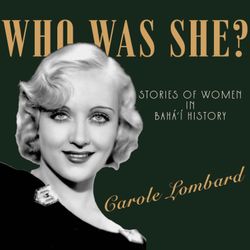
6. Her Greatest Heartbreak
08:09||Season 4, Ep. 6Two major deaths occur that impact Carole's life, which drives her to work harder in Hollywood. We have a website! https://www.podpage.com/whowasshepodcast/You can also find more information on our social media:http://instagram.com/whowasshepodcasthttps://www.facebook.com/whowasshepodcasthttps://www.pinterest.com/whowasshepodcastOur music composer, Sam Redd is on SoundCloud as "Sam Redd": https://soundcloud.com/samreddand YouTube as @SammyManhattan: https://www.youtube.com/@sammymanhattanSubscribe on your favorite podcast platform: https://pod.link/1548368026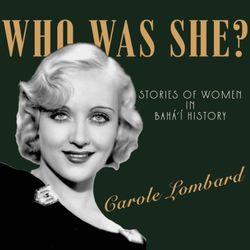
5. The Studios Trading Girl
11:45||Season 4, Ep. 5In this episode, Carole grows in her career, building her reputation as the comedic actress in Hollywood, working with major studios like Paramount and Columbia, making seven films back to back in one year, navigating a failing marriage, and much more!We have a website! https://www.podpage.com/whowasshepodcast/You can also find more information on our social media:http://instagram.com/whowasshepodcasthttps://www.facebook.com/whowasshepodcasthttps://www.pinterest.com/whowasshepodcastOur music composer, Sam Redd is on SoundCloud as "Sam Redd": https://soundcloud.com/samreddand YouTube as @SammyManhattan: https://www.youtube.com/@sammymanhattanSubscribe on your favorite podcast platform: https://pod.link/1548368026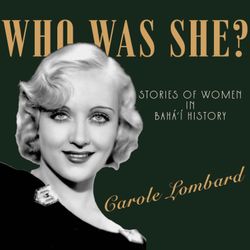
4. Mrs. Carole Powell
10:33||Season 4, Ep. 4Carole gets married, becomes the favorite client for the infamous talent agent, Myron Selznick, and holds her own against Harry Cohen, aka "The most hated man in Hollywood," plus much more! We have a website! https://www.podpage.com/whowasshepodcast/You can also find more information on our social media:http://instagram.com/whowasshepodcasthttps://www.facebook.com/whowasshepodcasthttps://www.pinterest.com/whowasshepodcastOur music composer, Sam Redd is on SoundCloud as "Sam Redd": https://soundcloud.com/samreddand YouTube as @SammyManhattan: https://www.youtube.com/@sammymanhattanSubscribe on your favorite podcast platform: https://pod.link/1548368026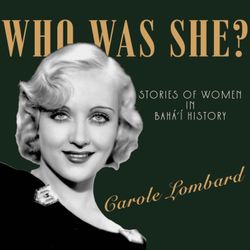
3. The Orchid Lady
07:06||Season 4, Ep. 3In the third episode of this new season, we follow Lombard's transformation from a struggling actress to becoming Paramount Pictures' "Orchid," how she earned the respect of Hollywood, and more! We have a website! https://www.podpage.com/whowasshepodcast/You can also find more information on our social media:http://instagram.com/whowasshepodcasthttps://www.facebook.com/whowasshepodcasthttps://www.pinterest.com/whowasshepodcastOur music composer, Sam Redd is on SoundCloud as "Sam Redd": https://soundcloud.com/samreddand YouTube as @SammyManhattan: https://www.youtube.com/@sammymanhattanSubscribe on your favorite podcast platform: https://pod.link/1548368026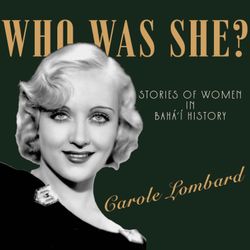
2. Introducing Carol Lombard
18:11||Season 4, Ep. 2This season is about one of Hollywood's first starlets, Carole Lombard and in this second episode, we learn about how she went from Jane Peters to her new screen name, Carol (without the e) Lombard, auditioning and avoiding the infamous 'casting couch' with Charlie Chaplin and John Barrymore, the car crash that nearly ended her career, and more!We have a website! https://www.podpage.com/whowasshepodcast/You can also find more information on our social media:http://instagram.com/whowasshepodcasthttps://www.facebook.com/whowasshepodcasthttps://www.pinterest.com/whowasshepodcastOur music composer, Sam Redd is on SoundCloud as "Sam Redd": https://soundcloud.com/samreddand YouTube as @SammyManhattan: https://www.youtube.com/@sammymanhattan Subscribe on your favorite podcast platform: https://pod.link/1548368026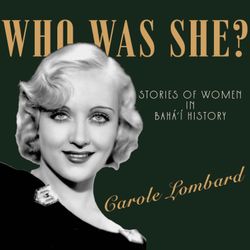
1. Who was Jane Peters?
10:32||Season 4, Ep. 1Welcome to Who was she? Podcast where your host, Tara Jabbari focuses on the stories of women throughout history that were active in the Baha’i Faith. This season is about one of Hollywood's first starlets, Carole Lombard.This first episode shares the story of her early beginnings from Indiana to what led to her family moving to Los Angeles. We have a website! https://www.podpage.com/whowasshepodcast/ You can also find more information on our social media:http://instagram.com/whowasshepodcasthttps://www.facebook.com/whowasshepodcasthttps://www.pinterest.com/whowasshepodcastSubscribe on your favorite podcast platform: https://pod.link/1548368026